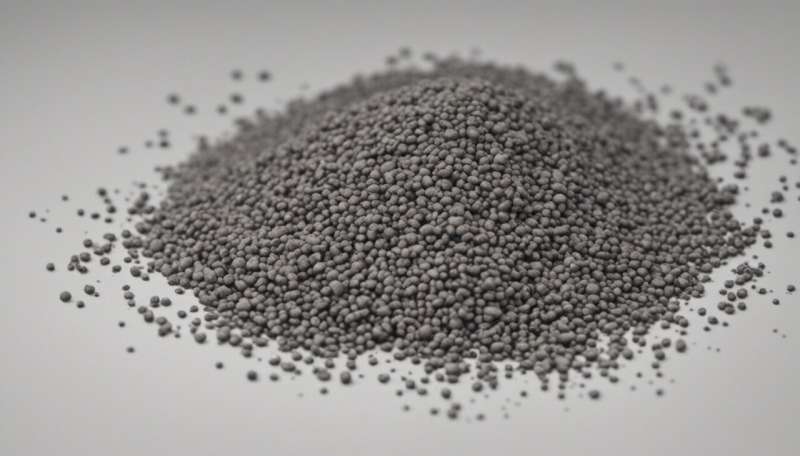
Faulty batches of generic lamotrigine tablets—an anti-convulsant drug commonly used for treating bipolar disorder and epilepsy—are being dispensed to patients in Australia. The compromised product is likely a result of poor quality controls during the overseas manufacturing process, research suggests.
The study, published in Australasian Psychiatry, used mass spectrometry to analyze six lamotrigine preparations distributed in Australia and two generic versions of the drug used by two patients reporting side effects. While the analyses of the six preparations were comparable and showed no signs of compromising, the assays of the drugs taken by the two patients showed deviations in the lamotrigine concentration.
“The findings are not suggesting that all generics are universally compromised. But our analyses do indicate some compromised lamotrigine medications are being distributed in Australia,” says the study’s lead author, Gordon Parker, Scientia Professor of Psychiatry at the School of Clinical Medicine, UNSW Medicine & Health.
Substituting a medication for a generic with the same bioequivalence as the branded version is usually considered safe unless otherwise medically advised. But any changes to the bioequivalence, even in inactive substances, can compromise a drug and its effects.
The analyses of the two individual generics showed an increase in lamotrigine concentration compared to the non-generic brands. Although it isn’t certain whether the compromised product alone could explain the patients’ side effects, Prof. Parker says it’s unlikely they were just experiencing regular side effects.
The two patients with bipolar disorder in the study reported adverse reactions after taking a generic lamotrigine preparation. The first developed side effects, including spots, lumps and blisters following the switch to a generic brand on a low dosage. The side effects reportedly ceased on return to the non-generic, even at an increased dosage. The other—who was not previously prescribed lamotrigine—developed breathing issues, chest pain, hot flushes, nausea and a worsening depression on a low dosage.
“It’s not that one particular product is bad, but the generics they were taking seem to be associated with some reasonably toxic side effects, and the irregularities we found from the assays support a faulty batch explanation,” Prof. Parker says.
While lamotrigine generics aren’t a “lower quality version” according to the study, there is anecdotal evidence that patients using different brands of lamotrigine experience different effectiveness in mood control and we can presume the same for seizure, Prof. Parker says.
“Patients sometimes report to me that certain generic antidepressant or antipsychotic drugs are less effective than the non-generics but the rate of suggested ineffective generic lamotrigine drugs appears quite distinctly higher,” Prof. Parker says. “It’s rare, but some will also report side effects after starting a generic after having no side effects on the non-generic. The rate of that phenomenon is higher in lamotrigine than for any other medication I prescribe.”
Quality control issues during manufacturing
The study also investigated the products’ manufacturing origin and transportation conditions. Five of the companies contacted stated their product was manufactured in India, with transport to Australia by ship or plane. Only three companies confirmed the product was temperature controlled and checked following transit.
It’s recommended lamotrigine is stored at a temperature below 30 degrees to not compromise the product. However, the six products in the study showed no distinct temperature effects when heated or cooled.
“It’s possible that being transported to Australia, they might be exposed to excessive heat or cold and may break down. But we suspect there are some manufacturing sites where the product is being compromised or contaminated after receiving TGA approval,” Prof. Parker says.
In Australia, companies must show evidence of their medications’ pharmacology, efficacy and safety before receiving approval from Therapeutic Goods Administration (TGA). But pharmaceutical companies may not be aware of manufacturing quality control problems.
“The faulty batches likely reflect some on-site manufacturers having poor quality control processes, and the pharmaceutical companies may be quite unaware of what’s going on with their manufacturers,” Prof. Parker says.
Previous concerns about the safety of medication switching have led to major inquiries about the quality of lamotrigine overseas. In New Zealand, reports emerged in 2019 of adverse effects and deaths associated with switching rapidly between lamotrigine brands, leading to parliamentary petitions and a Coronial inquiry. However, no recommendations were made from the inquiry since the evidence did not show a clear link to brand switching.
But later that year, Medsafe—the New Zealand Medicines and Medical Devices Safety Authority—issued advice following the UK Medicine and Healthcare products Regulatory Agency that “if you have already switched brands and are stable, do not change brands again”.
According to the TGA, there were 114 adverse events reported for lamotrigine, including four deaths, between January 2018 and February 2021. Despite this, Prof. Parker says the issue is still flying under Australia’s radar.
Source: Read Full Article
